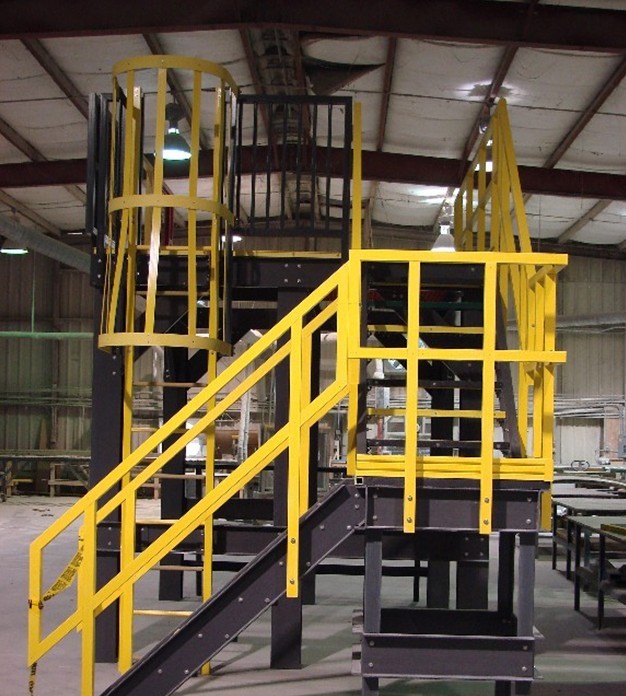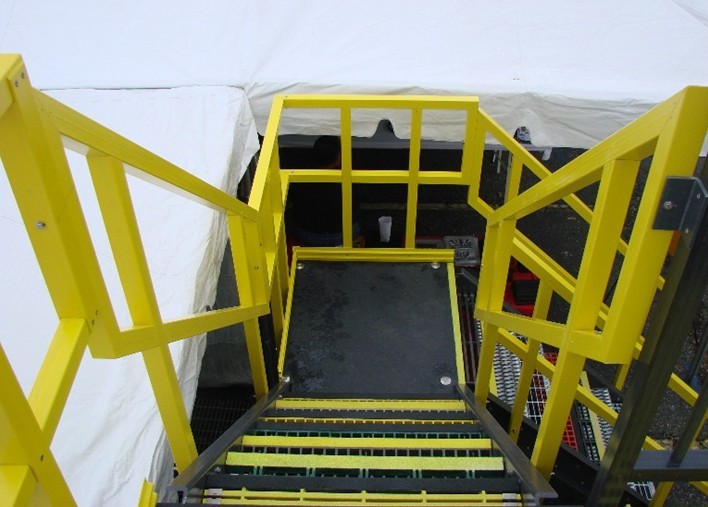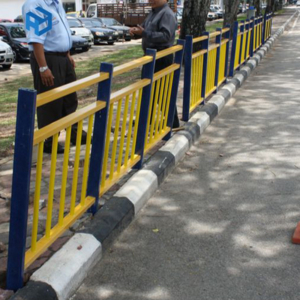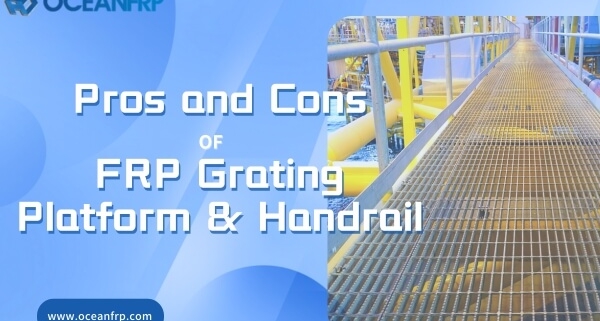Pros and Cons of FRP Grating Platform & Handrail
In the realm of industrial and commercial settings, the FRP Grating Platform & Handrail stands as a pivotal element, blending safety with functionality seamlessly. The increasing adoption of fiberglass platforms in sectors like oil and gas, chemicals, and water treatment underscores its significance in ensuring workplace safety standards. With OCEANFRP’s product features such as corrosion resistance and UV protection, these handrail systems offer unparalleled durability and reliability. As market trends reveal a growing emphasis on longevity and safety features in infrastructure projects, the importance of selecting a reputable manufacturer like OCEANFRP becomes paramount. Elevate safety with OCEANFRP’s fibreglass handrail solutions, designed to meet the highest standards of protection and support.

Pros of FRP Grating Platform & Handrail
When considering the durability aspect of FRP Grating Platform & Handrail, it’s essential to highlight its remarkable resistance to corrosion. This feature ensures a prolonged lifespan, making it a cost-effective choice for various industries. Additionally, the impact resistance of these systems further solidifies their reliability in demanding environments.
In terms of safety features, safety handrails play a crucial role in providing support and guidance to individuals navigating elevated platforms. The incorporation of UV resistance adds an extra layer of protection against environmental factors, ensuring longevity without compromising safety standards.
The easy installation and maintenance of FRP Grating Platform & Handrail systems streamline operational processes. Their lightweight design facilitates swift installation, reducing downtime significantly. Moreover, the minimal maintenance requirements contribute to overall cost savings and operational efficiency.
As experts in the field emphasize, FRP grating finds extensive applications across various sectors such as industrial, pulp & paper, food & beverage, mining, and oil & gas industries. Its lightweight properties coupled with high durability make it a preferred choice for flooring, stairs, walkways, platforms, and trench covers in industrial settings.

Versatility
Customizable Options
Enhancing its appeal across diverse industries, the FRP Grating Platform & Handrail offers a range of customizable options to cater to specific project requirements. Clients can select from various dimensions, colors, and surface textures to tailor the platform and handrail systems to their unique needs. This customization flexibility ensures that each installation aligns perfectly with the existing infrastructure, promoting seamless integration and optimal functionality.
Wide Range of Applications
The versatility of FRP grating extends to a wide range of applications in industrial sectors such as pulp & paper, food & beverage, mining, and oil & gas. In the pulp & paper industry, FRP grating is utilized in production areas, storage tanks, and wet environments due to its non-corrosive properties. For the food & beverage sector, its non-slip and hygienic features make it an ideal choice for maintaining safety standards. In mining operations, FRP grating serves as safety platforms ensuring secure working conditions. Moreover, the oil & gas industry relies on FRP grating for offshore platforms where durability and strength are paramount.
By offering customizable solutions and catering to diverse industry needs, FRP Grating Platform & Handrail emerges as a versatile choice for enhancing safety and functionality across various industrial applications.
Cons of FRP Grating Platform & Handrail
Initial Cost
When considering the initial cost of implementing FRP Grating Platform & Handrail systems, it’s crucial to acknowledge that they may require a higher upfront investment compared to traditional materials. This initial expense can be attributed to the advanced manufacturing processes and high-quality materials used in creating fiberglass platforms and handrails. While the upfront cost may seem significant, it is essential to recognize the long-term benefits and cost savings that these durable systems offer over time.
Higher Upfront Investment
The higher upfront investment in FRP grating platforms and handrails reflects the superior quality and longevity of these systems. By investing in fiberglass solutions, industries prioritize safety, durability, and reliability in their infrastructure projects. Although the initial expenditure might be more substantial than conventional options, the extended lifespan and minimal maintenance requirements of FRP platforms make them a cost-effective choice in the long run.
Comparison with Other Materials
In comparison with other materials like steel or wood, FRP Grating Platform & Handrail systems present a compelling case for their value proposition. While traditional materials may have lower initial costs, they often entail higher maintenance expenses and shorter lifespans. The corrosion resistance, impact strength, and customizable features of fiberglass platforms make them a competitive alternative despite the slightly higher starting investment.

Limited Awareness
The limited awareness surrounding FRP Grating Platform & Handrail solutions poses a challenge in their widespread adoption across industries. Despite their proven benefits and versatile applications, there remains a gap in understanding the full potential of fiberglass platforms among decision-makers and project planners. Addressing this knowledge gap is essential to unlocking the numerous advantages that FRP systems offer.
Market Penetration
The market penetration of FRP Grating Platform & Handrail products is hindered by misconceptions about their performance capabilities and suitability for diverse environments. Educating key stakeholders about the benefits of fiberglass platforms can lead to increased acceptance and integration of these innovative solutions in industrial settings. As more industries recognize the value proposition of FRP systems, market penetration is likely to expand significantly.
Need for Education
The need for education on the features and applications of FRP Grating Platform & Handrail products underscores the importance of industry-wide training initiatives. By providing comprehensive information on the durability, safety features, customization options, and cost-efficiency of fiberglass platforms, manufacturers can empower businesses to make informed decisions regarding their infrastructure investments. Education plays a pivotal role in dispelling myths surrounding FRP systems and promoting their widespread use across various sectors.
Specific Use Cases
While FRP Grating Platform & Handrail systems offer numerous advantages, they may not be suitable for all environments due to specific limitations inherent in fiberglass materials. Understanding these constraints is essential for selecting the most appropriate platform solutions based on unique project requirements.
Not Suitable for All Environments
Fiberglass platforms may not be suitable for environments with extreme temperature fluctuations or prolonged exposure to harsh chemicals. In such cases, alternative materials with specialized properties may be more suitable to ensure long-term functionality and safety standards are met effectively.
Potential Limitations
Despite their versatility and durability, FRP Grating Platform & Handrail products have potential limitations that need to be considered during project planning stages. Factors such as load-bearing capacity, environmental compatibility, and installation requirements should be thoroughly evaluated to determine if fiberglass platforms align with specific project needs seamlessly.
- Highlighting the durability and safety featuresof FRP Grating Platform & Handrail showcases its superiority in industrial settings.
- The initial investment in OCEANFRP’s productmay be higher, but the long-term savings from reduced maintenance costs make it a cost-effective choice.
- Compared to traditional materials like steel, FRP gratingoffers strength, corrosion resistance, and long-term cost-effectiveness.
- Educating industries on the benefits of fiberglass platforms is crucial for wider acceptance and integration.
- With a focus on future advancements and continuous education, OCEANFRP’s FRP Grating Platform & Handrailremains a reliable solution for enhanced workplace safety.



